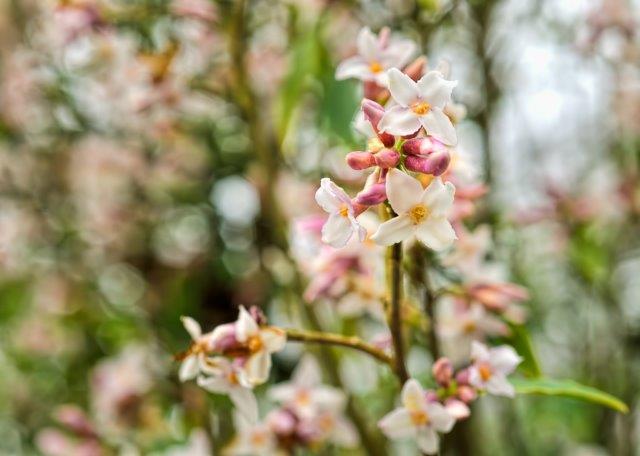Category
Despite the cold spells over the past few weeks, hardy winter flowers are peeping through in the Englefield House gardens providing a gentle burst of colour.
Head Gardener, Sue Broughton, provides some inspiration for what you could plant in your garden to add some winter and spring colour.
***
Colourful Camellias
Camellias can flower in autumn, winter or spring depending on the species. They all prefer semi-shade and a humus rich acidic soil and their bright flowers vary from white through to pink and deep reds.
There are many varieties within the species and the popular hybrid Camellia x williamsii and its cultivars are widely available. They can be grown in a container if space is limited or they make a perfect addition to woodland or garden borders.
Camellias should generally be planted through the autumn to early spring, however can be set out any month of the year if they are properly cared for.
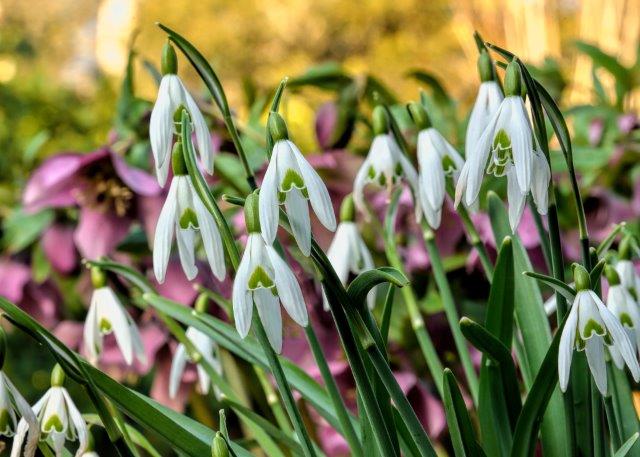
Christmas boxes
Sarcococca, or Christmas box as they are better known, have a powerful sweet scent which is surprising from such small insignificant white flowers. They are a useful evergreen shrub that can be planted near a path, in a pot or in the ground.
They are surprisingly easy to grow and maintain, providing a splash of green all year round and small white flowers in the winter and spring. You can plant them any time of the year, but avoid times when the soil is waterlogged, frozen or extremely dry.
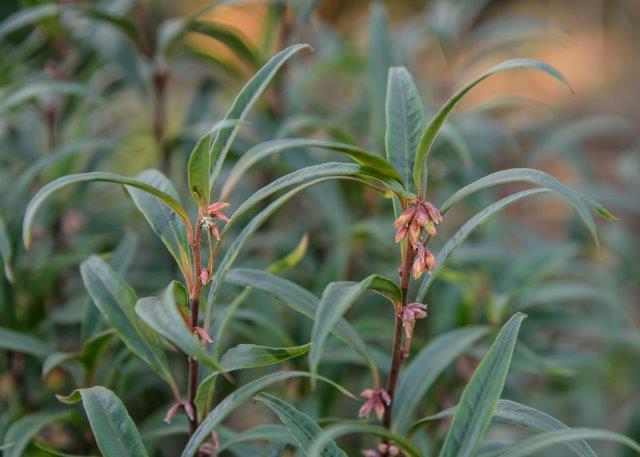
Winter cherry tree
Prunus x subhirtella ‘autumnalis’ is a winter flowering cherry tree whose small flowers are not as showy as the spring flowering prunus, but stand out more for the delicate canopy created by the mass of flowers.
In addition to their showy spring flowers, the trees - sometimes known as the rosebud cherry or winter cherry - often provide good autumn colour too, so you can have that flash of colour all year round. They can be planted any time of the year, but again avoid planting during particularly dry or particularly wet and cold spells.
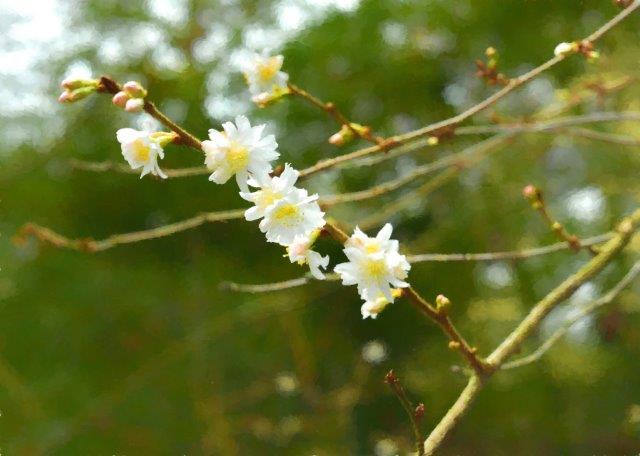
Witch hazel
Hamammelis, more commonly known as witch hazel, has flowers which look like lemon peel with a zingy appearance and a wonderful intense perfume. Plant these in semi-shade in autumn or winter and with other winter flowers such as Iris reticulate or Erica x darleyensis if in a more formal setting, otherwise they look splendid in the woodland.
Witch hazels can be damaged by hard frost, so avoid planting them in frost pockets or be prepared with protection during particularly harsh cold spells.
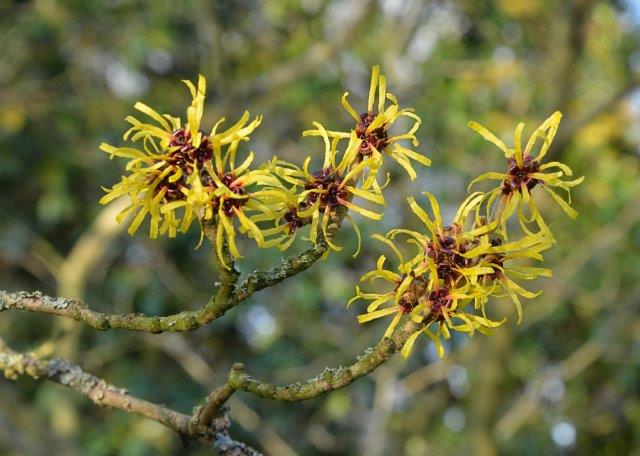
Bright aconites
Winter aconites (Eranthis hyemalis) have bright yellow cup like blooms that spread by seed, forming a wonderful carpet of ground cover to rival snowdrops (Galanthus nivalis). I prefer to plant both of these when they are in flower to be reassured that they will flower. As they both like the same moist semi-shaded conditions they are good companions.
Bulbs for both acronites and snowdrops are available in the autumn to plant or available in the spring in pots, usually in flower. Both snowdrops and aconites are also planted ‘in the green’ which means that they have finished flowering and can be planted out into the garden normally early March.
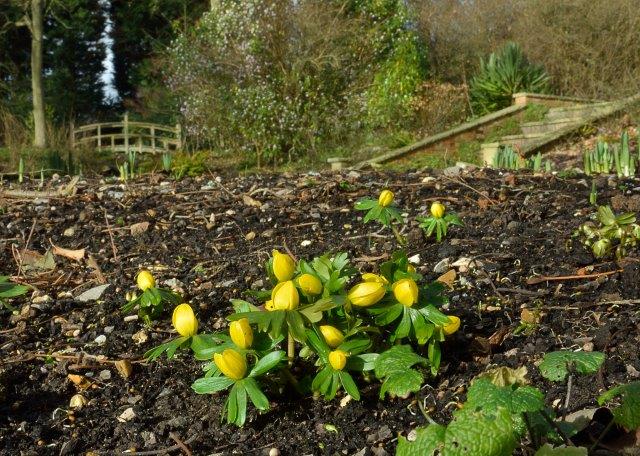
Delightful daphnes
Daphne bholua 'Jacqueline Postill' is a hybrid daphne that spreads easily in a woodland setting and not only has pretty flowers but a beautiful scent. Just like the Christmas box they are a cheerful addition near a door or seating place.
More or less an evergreen shrub, its purple-pink flowers bloom late winter followed by black berries in the summer. Plant in the spring in partial-shade for best results.
